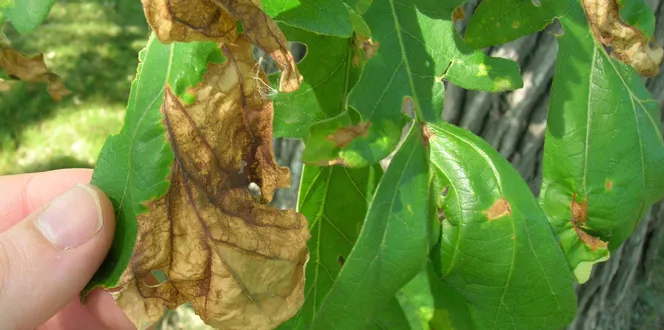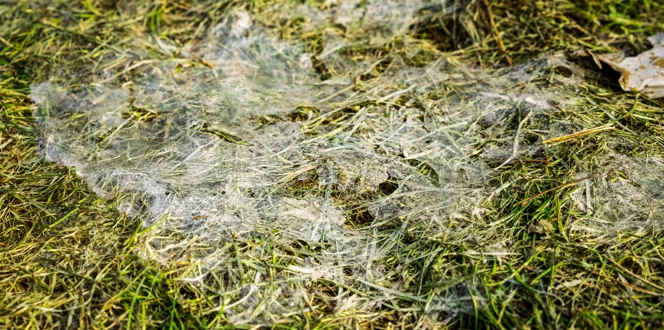Most of the time, it’s tough to figure out what’s wrong with your tree, but that’s definitely not the case for this type of rust!
There’s just no missing it. You’ll see strange orange balls appear on cedar or juniper trees. Some people think they look like slimy worms or octopus tentacles.
Read on to learn what they are, how they happen and why they may affect your crabapple or apple tree next!
Cedar Apple and Juniper Rust Fungus: What It Is and The Treatment to Stop It
This type of fungus needs two host trees. So, the disease first develops on a juniper, also called a red cedar, then spreads to apple or crabapple trees. Though, some apple trees are resistant!
What are these orange balls on cedar or juniper trees?
Here's how those come to be:
 First, fungal spores from infected apples or crabapples settle onto your juniper tree in late summer or early fall.
First, fungal spores from infected apples or crabapples settle onto your juniper tree in late summer or early fall. - The following year, the fungus develops brown, woody galls. These are essentially an abnormal growth, like a tumor, that may look like a golf ball. You’ll see these mature in the fall.
- Come spring, usually after lots of rain, the galls swell and produce thick orange tendrils. Some people think it looks like the galls are sprouting orange, spiky hair! Missing these in the garden is impossible.
- Those freaky-looking tendrils then release spores that land on your apple or crabapple trees. From there, they cause the yellow spots or growth on the tree leaves that are associated with cedar apple rust.
Does cedar or juniper rust fungus hurt trees?
Nope. Those trees don't bear the burden of rust fungus. They're nothing more than a starting point.
Instead, apple and crabapple trees are usually the ones most affected.
After the galls develop the gelatinous horns in the spring, they release spores that land on apple and crabapple trees. The apple tree leaves become speckled with yellow or orange dots before dropping. As a result, fruit quality declines and may even fall off.
Is there a treatment for this fungus?
Since junipers aren't harmed by this, it's not necessary to treat them. But, you can take a proactive approach to manage the spread of this by removing any of your juniper trees that sit a few hundred feet or less from your fruit trees.
Focus your treatment on the infected apple or crabapple tree. Trees usually respond well to a few fungicide applications. But since timing is everything when it comes to successful treatment, talk to an ISA Certified Arborist® to get it right.
Can you eat cedar apple rust? Is it edible?
While they look interesting enough to eat, avoid the temptation. You shouldn’t eat those–or any affected fruits. The infection taints the fruit, making it a lower quality.
Is cedar apple rust harmful to humans?
Nope. It doesn’t harm humans! In fact, it’s okay to touch them. If you want to take action now, remove the galls by hand, and dispose of them far away from your other trees.






